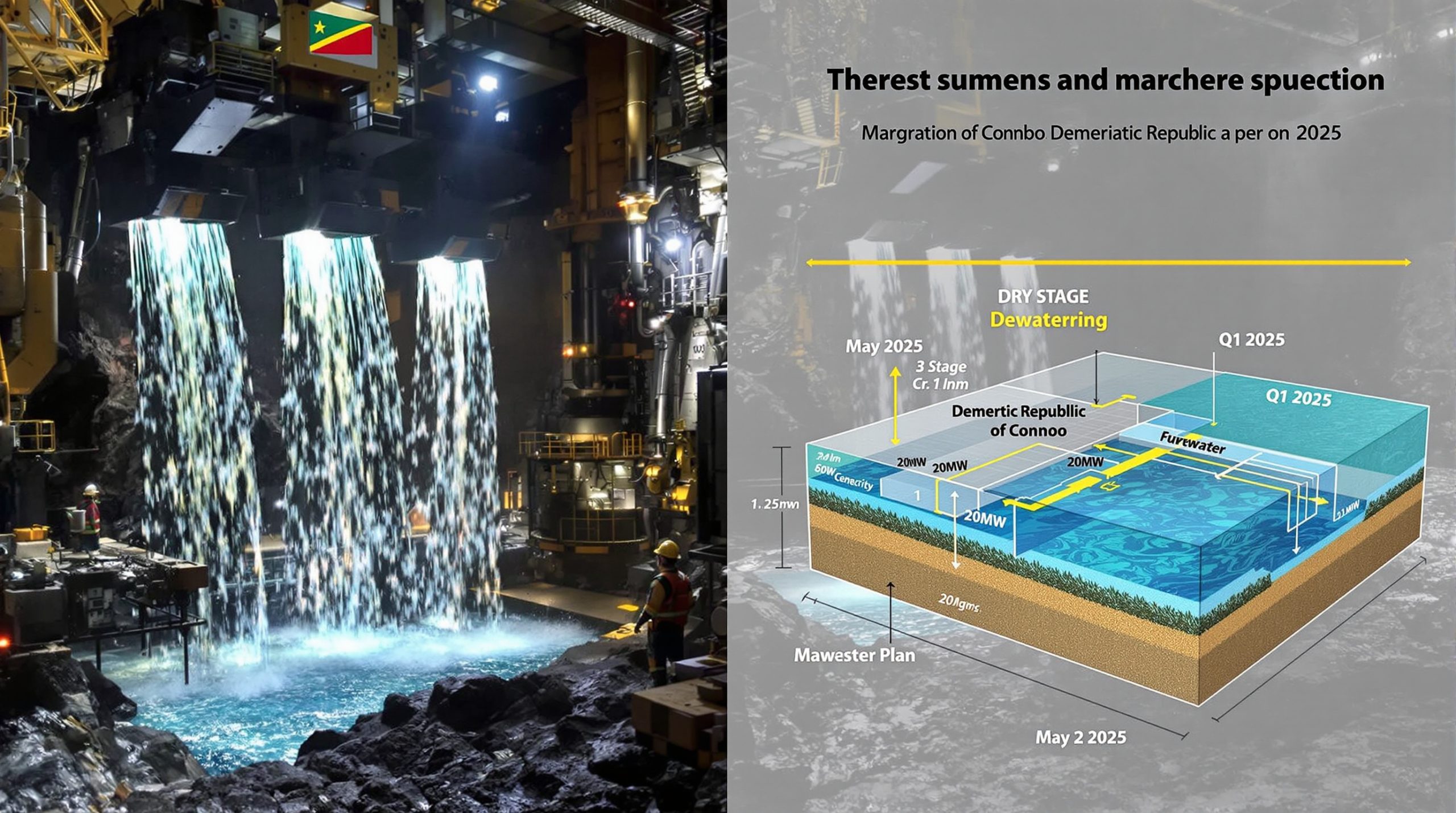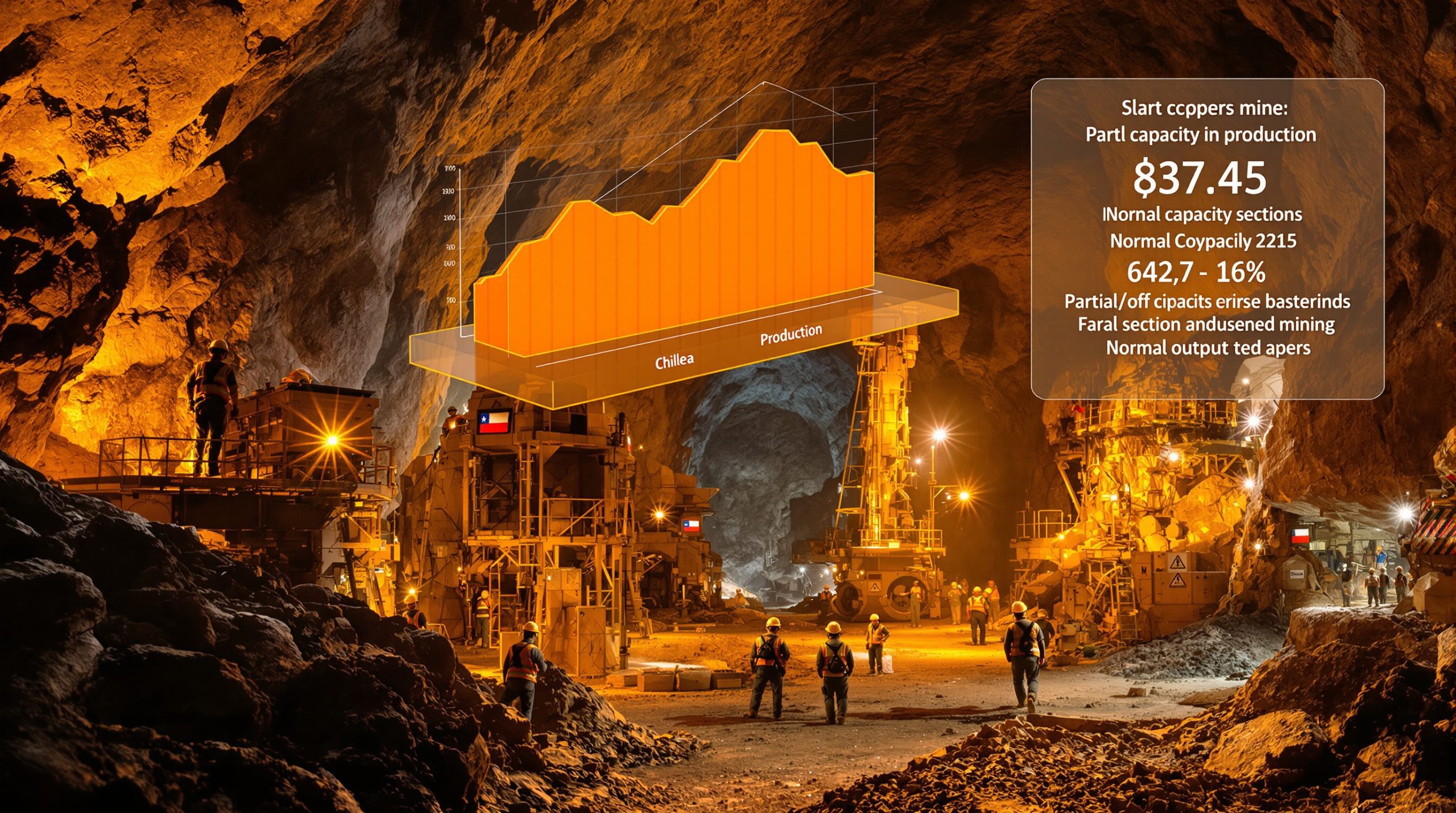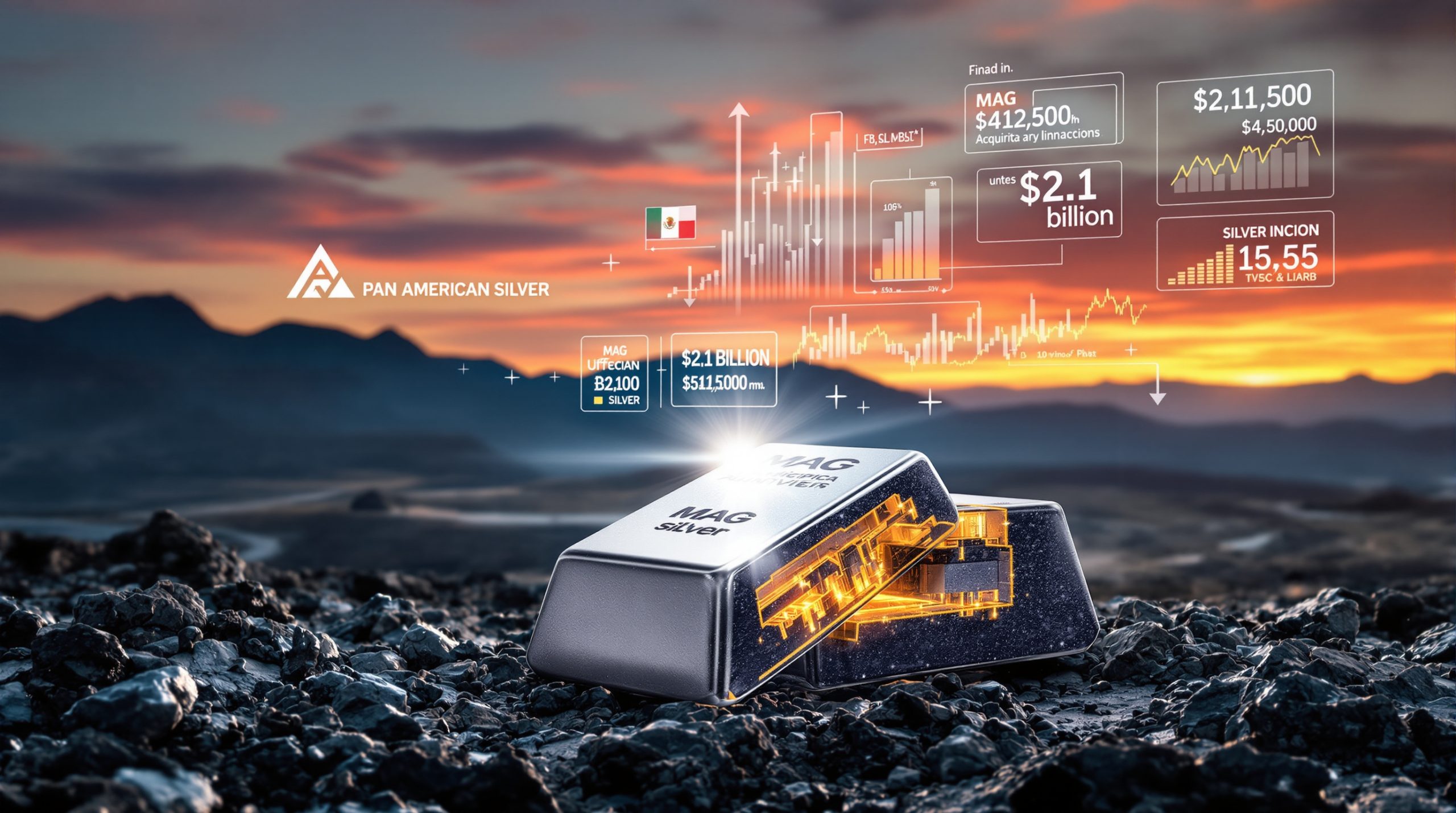The Unexpected Tariff Decision and Market Fallout
Trump's Copper Tariff Announcement: What Actually Happened?
In a move that sent shockwaves through global commodity markets, President Trump's July 2025 announcement excluded refined copper from the sweeping 50% tariff package. This crucial exemption, which came just days before the August 1 implementation deadline, will only apply tariffs to processed forms of copper while leaving the refined metal untouched.
The decision represented a dramatic reversal of widely-held market expectations that had anticipated comprehensive copper tariffs affecting all forms of the metal. Industry analysts had been positioning for months based on signals that the administration would implement broad protections for domestic copper producers.
"The binary risk on the spread – tariff or no tariff – is now gone," noted Anant Jatia, chief investment officer at Greenland Investment Management, highlighting how the announcement fundamentally altered the risk calculations for traders worldwide.
Immediate Market Reaction to the Tariff Exemption
The market response was immediate and dramatic. New York copper prices on COMEX (the US market) collapsed by over 20% in a single trading session following Trump's announcement – one of the largest single-day declines in copper market history. Meanwhile, London Metal Exchange (LME) prices fell a comparatively modest 0.9%, instantly compressing the significant premium that US copper had commanded.
The once-substantial price differential between US and global copper markets imploded within hours. This differential had been the foundation of a massive arbitrage trade that had developed over the preceding months, with traders positioning inventory to capitalize on anticipated tariff-driven price gaps.
Traders worldwide scrambled to adjust positions, with many facing potential mark-to-market losses in the billions. Trading screens turned red across trading floors from New York to Singapore as the reality of the decision rippled through global markets.
The $5 Billion Copper Arbitrage Unwinding
The Pre-Tariff Arbitrage Trade Explained
In anticipation of the tariffs, savvy commodity traders had orchestrated one of the largest positional trades in recent copper market history. An estimated 500,000-600,000 tons of excess copper had been shipped to US ports, creating a stockpile valued at more than $5 billion. This massive inventory build represented a significant portion of global refined copper supplies, temporarily redirected to capture expected tariff-driven premiums.
New Orleans emerged as the world's largest repository of exchange copper inventory, with warehouses filled to capacity with the reddish metal. Trading houses, including Mercuria Energy Group Ltd., IXM, and Trafigura Group, shipped substantial volumes – including non-exchange-deliverable African copper – to the US, according to customs data analyzed by Bloomberg News.
The arbitrage strategy was elegant in its simplicity: position metal in the US before tariffs took effect, then capture the premium when domestic prices inevitably rose due to restricted imports. The math appeared compelling, with potential gains of thousands of dollars per ton.
Why New Orleans Became the Copper Capital
New Orleans emerged as the epicenter of this copper trade for several strategic reasons. Its deep-water port offers both domestic distribution access and potential re-export capabilities – crucial flexibility for traders uncertain about the final tariff implementation details.
The city hosts both LME and COMEX warehouse facilities, allowing traders to optimize delivery options based on price differentials. Additionally, lower logistics costs compared to other US port options made New Orleans particularly attractive for a trade where margins could be significantly affected by transportation expenses.
The established infrastructure for handling metal shipments, including specialized warehousing companies experienced in exchange deliveries, further cemented New Orleans' position as the copper capital during this unprecedented market dislocation.
The Logistical Challenges of Unwinding Positions
With Trump's surprise tariff exemption for refined copper, traders now face complex logistical challenges. Copper delivered to ports like Long Beach and Hawaii must now be reallocated, with difficult choices between domestic repositioning and costly re-export.
Moving metal between warehouses in the same US city costs approximately $50 per ton – a significant expense when multiplied across hundreds of thousands of tons. For non-exchange-deliverable African copper, the challenges are particularly acute, as these cargoes may not meet the specifications required for delivery to exchanges like the LME or COMEX.
Traders must now evaluate multiple factors: storage costs, financing expenses, transportation options, and exchange delivery rules – all while navigating a rapidly evolving market environment with compressed margins.
What Happens to All That Copper Now?
The Rush for LME Warehouse Space
Within 27 hours of Trump's announcement, traders had booked all available LME warehouse space in New Orleans, according to industry sources cited by Bloomberg News. Some warehousing companies report no capacity for the next three months, creating a bottleneck for traders seeking to reposition metal.
The metal flow is expected to reverse dramatically – from primarily US-bound shipments to significant deliveries into LME warehouses. This shift represents a complete reversal of the prevailing trade pattern that had dominated the copper market in recent months.
"I think you will see deliveries onto both the LME and CME. It's all a function of what is cheaper – letting the cargo reach the US or re-routing back to the LME," explained Anant Jatia of Greenland Investment Management, highlighting the complex calculations traders must now make.
Price Impact and Market Structure Changes
The LME copper market moved into a deeper contango following the announcement, with spot prices trading at a widening discount to futures contracts. This market structure signals expectations of ample near-term supply as metal potentially flows back into exchange warehouses.
The widening discount in nearby prices reflects the anticipated surge in available metal as traders reposition inventory. Financial investors who had bet heavily on tariffs now face potential forced liquidations, with TD Securities estimating record outflows from copper positions.
"The fallout from the chaos in copper markets is likely to result in forced sales resulting from epic mark-to-market losses. We estimate that the resulting flows could be in line with or even surpass the largest outflows on record," warned Daniel Ghali of TD Securities Inc., highlighting the potential for cascading selling pressure.
Winners and Losers in the Tariff Reversal
The Trump tariff impact created clear winners and losers across the $250 billion copper market. Traders who prudently hedged positions before the announcement preserved profits despite the market volatility, demonstrating the value of risk management in policy-sensitive markets.
Companies with unhedged positions face significant mark-to-market losses, potentially running into the hundreds of millions for the largest players. Conversely, warehousing companies benefit from increased storage demand as traders seek temporary homes for excess inventory.
US copper consumers emerge as perhaps the biggest winners, gaining access to lower domestic prices without the artificial inflation that tariffs would have created. This improved cost structure may boost manufacturing competitiveness for copper-intensive industries like electrical equipment and construction.
The Global Copper Market Outlook
Shifting Focus Back to China
With the US "magnetic force" on global copper flows removed by the tariff exemption, market attention is returning to China as the primary demand driver for the metal. China consumes more than half of global copper production, making Chinese industrial activity and stockpiling policies the fundamental drivers of market dynamics.
The removal of tariff-driven distortions allows for a return to more traditional market fundamentals and price relationships. Regional premiums will likely revert to historical patterns based on physical supply-demand balances rather than anticipatory trade flows.
This normalization could lead to a more balanced global distribution of copper inventories, with metal flowing to regions of genuine demand rather than tariff-driven arbitrage opportunities.
Long-Term Copper Market Considerations
Despite the short-term market disruption, copper remains critical for energy transition technologies, with demand expected to grow significantly in coming years. Electric vehicles, renewable energy infrastructure, and grid modernization all require substantial copper inputs, supporting long-term copper price prediction fundamentals.
Governments increasingly view copper as a strategic resource, with Trump's announcement leaving open the possibility of revisiting copper tariffs in 2027. This policy uncertainty creates an ongoing challenge for long-term investment decisions in copper mining and processing infrastructure.
Market participants are now returning to traditional trading strategies based on supply-demand fundamentals, moving away from the binary tariff bet that dominated recent market activity. This shift should reduce extreme volatility while still allowing for profitable trading opportunities based on regional dislocations and temporal spreads.
How Traders Are Adapting Their Strategies
Risk Management Lessons from the Tariff Episode
The copper tariff saga has delivered valuable risk management lessons for commodity traders. The importance of hedging positions against policy uncertainty has been painfully demonstrated, with properly hedged players weathering the storm while unhedged positions suffered catastrophic losses.
Maintaining flexibility in logistics arrangements proved crucial, as traders with optionality in their delivery locations could more easily pivot when market conditions changed. Contingency planning for politically sensitive markets has emerged as an essential discipline, with scenario analysis covering both expected outcomes and lower-probability events.
The benefits of diversified warehouse and delivery options have been clearly illustrated, as traders with multiple potential delivery points could optimize their response to the shifting tariff landscape.
New Trading Approaches in the Post-Tariff Environment
With the return to more traditional market structures, traders are revisiting established arbitrage strategies between exchanges. The reduced binary risk allows for more nuanced trading approaches based on gradual market movements rather than anticipated policy shocks.
Increased focus on physical premiums and regional price differentials is emerging as a profitable strategy, with attention to supply chain bottlenecks and regional demand variations. More sophisticated analysis of fundamental supply-demand factors is replacing simplistic tariff anticipation strategies.
Traders are also developing more robust scenario analyses that incorporate political risk factors, recognizing that commodity markets increasingly exist at the intersection of economics and geopolitics.
The Broader Impact on Metal Markets
Implications for Other Metals Facing Tariff Threats
The copper tariff exemption creates an important precedent for potential exemptions in other metal categories threatened by tariffs. Market participants in aluminum, steel, and other metals markets are reassessing the probability of full implementation versus targeted exemptions.
Increased volatility can be expected in markets anticipating tariff decisions, as the copper experience demonstrates the potential for dramatic price moves. The importance of distinguishing between refined and processed forms has been highlighted, with potential for similar distinctions in future tariff structures.
The copper episode also illustrates the potential for similar market dislocations in other metals, with lessons for risk management across the broader commodities complex.
Global Trade Flow Disruptions
The trump tariff surprise and copper trade has triggered a significant repositioning of global metal inventories that will continue to unfold over coming months. Changing shipping patterns and freight rates are emerging as metal cargoes are redirected, creating both challenges and opportunities for logistics providers.
Traditional supply chains and distribution networks face ongoing disruption as metal inventories rebalance globally. There is potential for new trading hubs to emerge as market participants seek to optimize positioning for future policy uncertainty.
The redirection of hundreds of thousands of tons of copper demonstrates how quickly global commodity flows can respond to policy signals, highlighting both the efficiency and vulnerability of modern supply chains.
How Does This Fit Into the Larger Commodity Market Picture?
Copper's Role in the Global Economy
Copper's significance as an economic indicator – often called "Dr. Copper" for its ability to predict economic trends – makes this market disruption particularly notable. The metal's price movements provide valuable insights into expectations for global manufacturing activity and construction.
The metal's importance to energy transition and electrification continues to grow, with copper demand projected to increase substantially as renewable energy capacity expands globally. This growing demand is reflected in both the copper investment outlook and the copper supply forecast which show significant potential for market tightness in coming years.
Trump's tariff decision demonstrates how policy moves can temporarily overwhelm fundamental market factors, creating both risks and opportunities for informed market participants.
The Growing Politicization of Commodity Markets
The copper tariff episode illustrates the increasing government intervention in resource markets globally. Strategic minerals are increasingly becoming tools of trade policy, creating new risks for market participants accustomed to primarily fundamental-driven markets.
Policy uncertainty impacts investment decisions throughout the supply chain, from mining projects to processing facilities. The challenges for long-term supply planning are substantial when major markets can be disrupted by administrative decisions with limited notice.
Market participants must now develop expertise in policy analysis alongside traditional market fundamentals, representing a significant evolution in commodity trading skill requirements.
FAQs About the Copper Tariff Situation
What exactly did Trump's tariff announcement change?
The announcement exempted refined copper from the 50% tariff that will apply to processed forms of copper starting August 1, 2025. This was contrary to market expectations that all copper imports would face the tariff.
How much copper had been shipped to the US in anticipation of tariffs?
An estimated 500,000 to 600,000 tons of excess copper inventory was shipped to US ports, creating a stockpile valued at more than $5 billion.
What happens to copper prices now?
US copper prices have already fallen over 20% following the announcement. LME prices declined less dramatically but are expected to face downward pressure as traders redirect metal to exchange warehouses.
Will this copper be re-exported from the US?
Some copper may be re-exported, but the high costs of doing so (approximately $50 per ton just to move between warehouses in the same city) mean much of it will likely remain in the US, either in exchange warehouses or sold to domestic consumers.
Could Trump reimpose tariffs on refined copper in the future?
Yes, the announcement left open the possibility of imposing import tariffs on refined copper in 2027, creating continued uncertainty in the market.
Disclaimer: This article contains analysis of volatile commodity markets affected by policy decisions. All forecasts and market projections involve uncertainty and should not be considered investment advice. Consult qualified financial advisors before making investment decisions based on market developments discussed herein.
Want to Identify the Next Major Mineral Discovery?
Discovery Alert's proprietary Discovery IQ model delivers real-time notifications on significant ASX mineral discoveries, turning complex data into actionable investment opportunities before the broader market reacts. Explore why major mineral discoveries can lead to exceptional returns by visiting our dedicated discoveries page.




